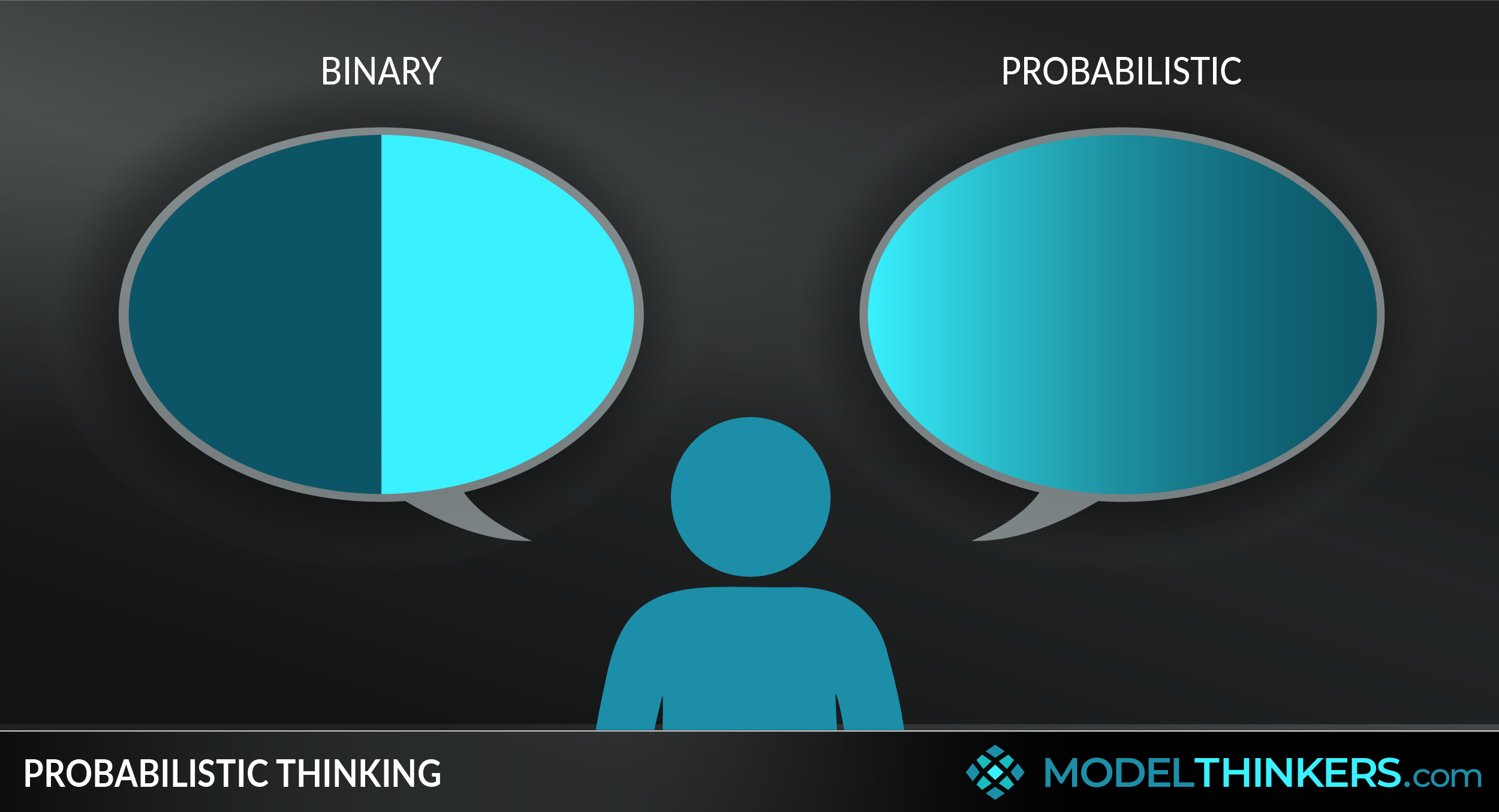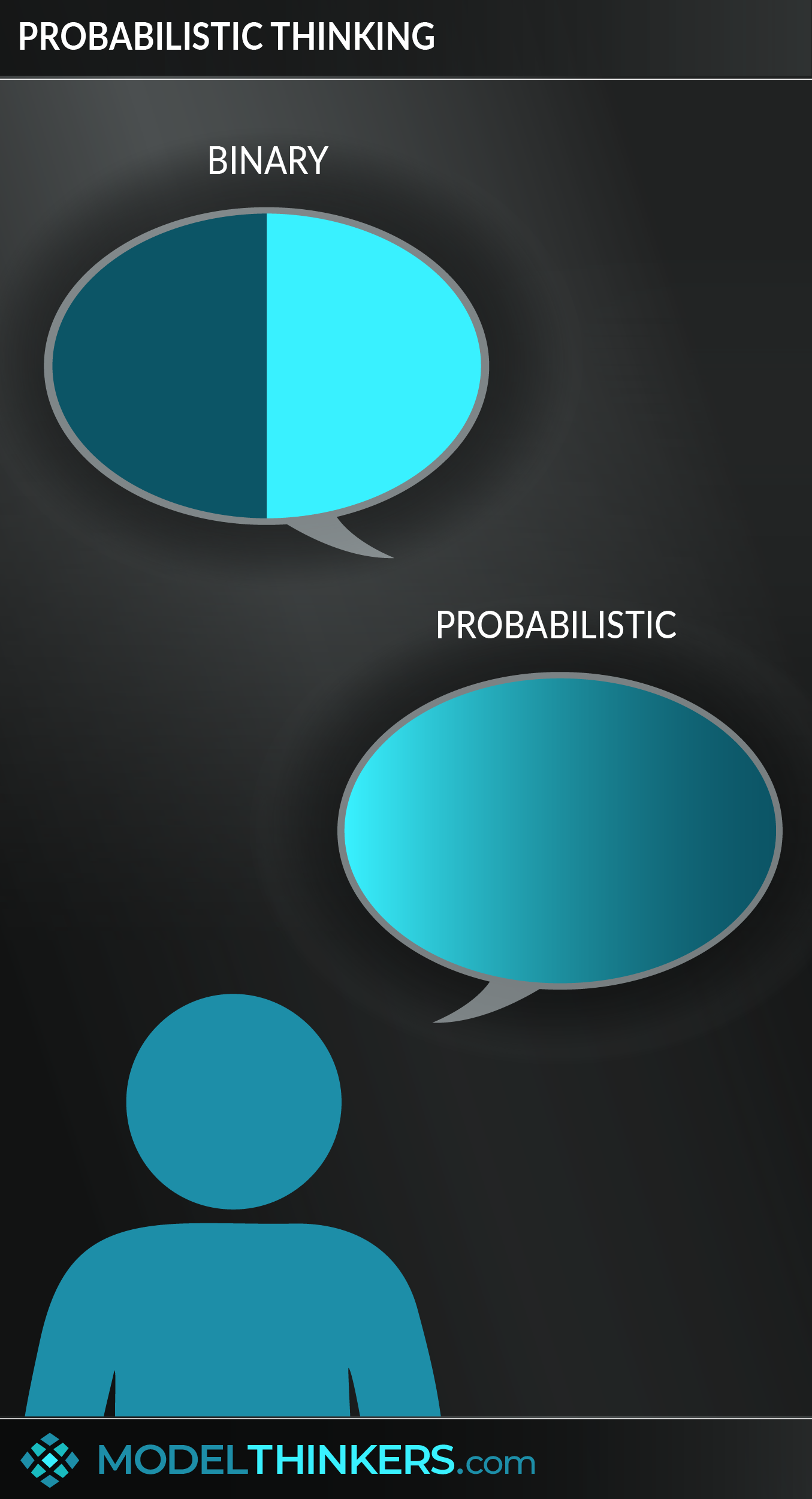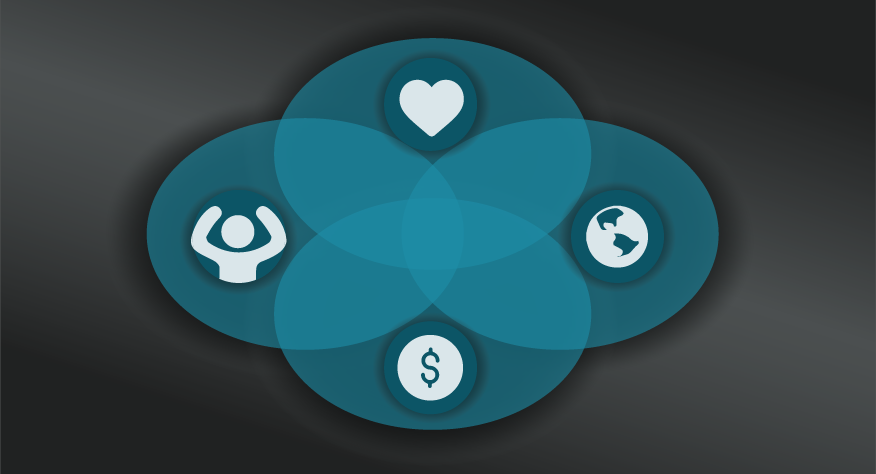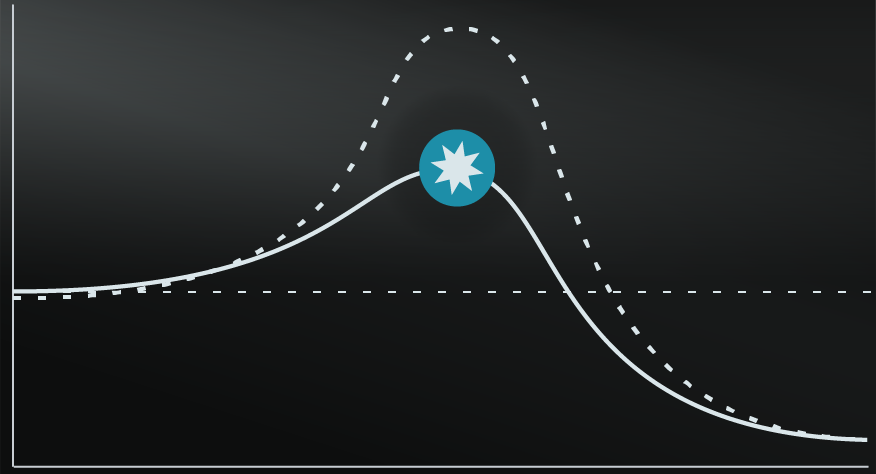

 0 saved
0 saved
 29.2K views
29.2K views








The horrible truth? In our culture, 'uncertainty' is a dirty word.
In most situations, it's common, perhaps even expected, that you approach and explain the world with Binary Thinking — where options, choices and everything is either black or white; yes or no; on or off.
Binary Thinking will suffice for some things, sometimes. But for the most part, in the reality of our uncertain, complex world, this simply won't cut it.
A more useful approach is Probabilistic Thinking, which helps to inform decision making by considering the odds, or likelihood, of various outcomes.
FROM POKER TO BUSINESS.
As poker champion and author Annie Duke explained: “Poker players and entrepreneurs both embrace the probabilistic nature of decisions. When you make a decision, you’ve defined the set of possible outcomes, but you can’t guarantee that you’ll get a particular outcome.”
FORECASTING.
This model is particularly important given findings from behavioural economics that we tend to be overly optimistic and overconfident in predictions. For example, one way to improve forecasts involves researching past cases and assigning probabilistic outcomes to those cases.
BEFRIENDING UNCERTAINTY.
Part of Probabilistic Thinking involves befriending uncertainty, which is incredibly hard. And, as a result, finding the confidence to act by understanding probable outcomes, based on your current knowledge, while accepting the fact that you might always be wrong.
Your immediate inclination might be to focus Probabilistic Thinking on how you understand the world, that's wonderful, but also consider how you might apply it to your own development — see the Actionable Takeaways below for more.
IN YOUR LATTICEWORK.
Consider how to apply this Probabilistic Thinking to understanding Correlation vs Causation, Split Testing, Cynefin Framework, the Risk Matrix and even Second-Order Thinking all of which, in a variety of ways, help to understand and/or predict events in complex situations.




- Acknowledge and befriend uncertainty.
Be okay with saying ‘I’m not sure’. Accept that you are never going to know all the facts in any given situation and that there will be no guarantees of a specific outcome.
- Ask yourself, ‘what else might happen?’
Investing time and effort to consider more possible options will help to inform the actual chances of the desired or expected outcome.
- Decouple notions of ‘good’ and ‘bad’ decisions from outcomes.
Uncertainty and complexity means there is always a degree of luck involved in any situation, so it’s possible to make a ‘bad’ decision that leads to a positive outcome. Instead of focusing on results, reflect on past decisions from a probabilistic point of view.
- Express levels of confidence and avoid claiming 100% certainty.
Get in the habit of assigning levels of certainty to predicted outcomes, rather than claiming that something simply ‘will happen’, estimate the percentage chance it will happen based on your available facts.
- Update your probabilities.
Be open to new information and consider emerging facts that might inform an updated view of your probabilities. This involves challenging and interrupting your biases.
- Apply Probabilistic Thinking to understanding yourself to be adaptable and grow.
Rather than just pointing this mental model outwards, to help you understand the world, consider how it can help you to understand, manage and develop yourself. When expressing an emotion or thought, practice using the term 'part of me...'. For example, rather than saying 'I'm anxious about that', try saying 'part of me is anxious about that'. Not only is it more accurate, but it also gives room for you to acknowledge that other parts of you might be excited or happy at the same time. After all, you're as complicated as the rest of the world :).
Probabilistic Thinking is only as good as your information and your ability to interpret that information as objectively as possible. This requires consciously interrupting a range of cognitive biases.
In addition, probabilities of an outcome are only one aspect to consider, the other is impact. For example, walking like in a field during a thunderstorm might have low chances of you being hit by lightning but, if it did happen, the effects would likely be devastating.
Tossing a coin.
When tossing a coin, with a standard coin in standard conditions, it's possible to get a head or tail. Written as a probability that's:
Pr(H) = 0.5 and Pr(T) = 0.5, making it a 50% chance for either.
In other words, the simple way to express the probability of a particular event occurring is the number of ways that event can happen, divided by the total number of possible outcomes.
Remembering that those total number of possible outcomes will include unlikely outliers and extremes.
Predicting elections.
FiveThirtyEight is just one meta-pollster who use probabilistic thinking in their data modelling. Consider their approach to the 2020 US elections. Nate Cohn the founder of the group explained the reaction to Trump's shock win in 2016 and the backlash to pollsters: "We failed at explaining that an 85% chance is not 100%."
It's a point that Cohn and others often address, essentially highlighting their frustration of talking in Probabilistic Thinking to a media system set up to communicate in black and white, or binary thinking. For more on this critique, see FiveThirty Eight's article 'The Media has a Probability Problem', posted after the 2016 US election results.
Probabilistic Thinking is a useful way to understand and act in an uncertain world, and informs effective decision making.
Use the following examples of connected and complementary models to weave probabilistic thinking into your broader latticework of mental models. Alternatively, discover your own connections by exploring the category list above.
Connected models:
- Risk matrix: to consider probability of an occurrence versus severity of impact.
Complementary models:
- Regret minimisation framework: a good complement with probabilistic thinking to provide emotive based values, as well as probabilities.
- Second order thinking: to consider the implications beyond immediate consequences.
- High velocity decision making: particularly making decisions with part of the information.
- Agile methodology: to make a series of ‘small bets’ and learn accordingly.
- Feedback loop: to consider options and update probabilities accordingly.
The term “probabilistic logic” was first used by Nils Nilsson, American computer scientist and founding researcher in the field of artificial intelligence, in a paper published in 1986.
Access this online resource from Princeton University - Probabilistic Thinking by Princeton University’s Richard Jeffrey is an in-depth free online resource about probabilistic thinking, albeit a relatively academic one.
Another, perhaps more engaging read on the topic, comes from champion poker player Annie Duke, in the form of Thinking in Bets.
 My Notes
My Notes
Oops, That’s Members’ Only!
Fortunately, it only costs US$5/month to Join ModelThinkers and access everything so that you can rapidly discover, learn, and apply the world’s most powerful ideas.
ModelThinkers membership at a glance:






“Yeah, we hate pop ups too. But we wanted to let you know that, with ModelThinkers, we’re making it easier for you to adapt, innovate and create value. We hope you’ll join us and the growing community of ModelThinkers today.”

































































































